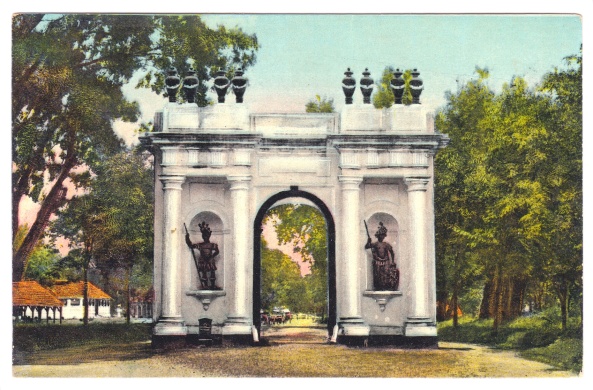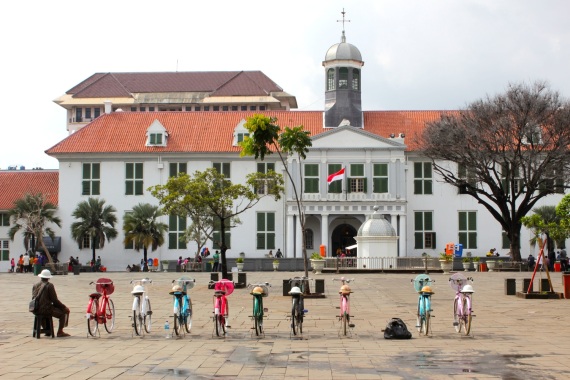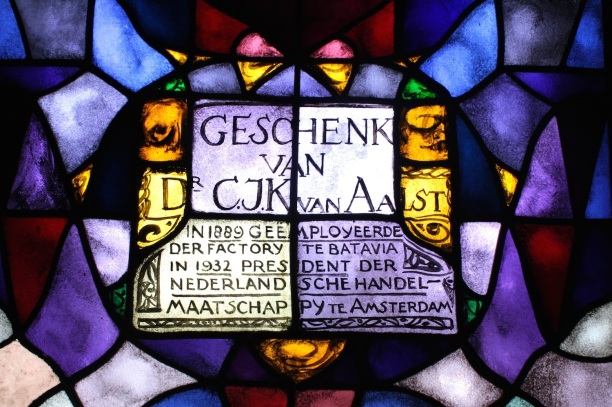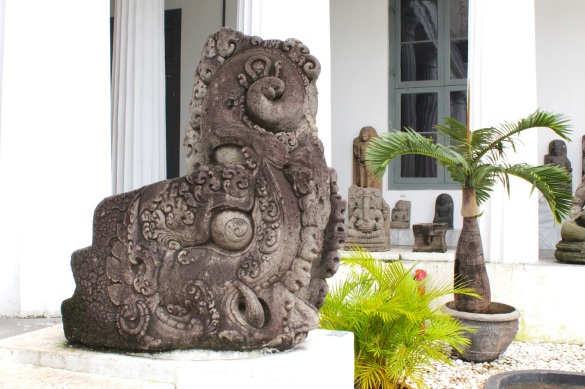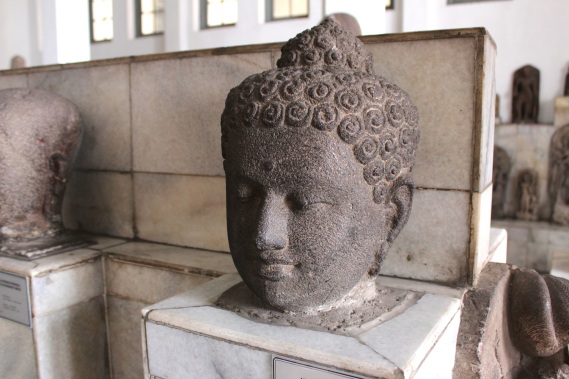
Stained Glass panel at the former De Javasche Bank (1828) in Kota Toea. Today, it houses the Museum Bank Indonesia.
At the recent book launch on 15 April 2015 at the Singapore Art Museum, I had the chance to highlight some of my favourite images from this Grand Tour project and why I thought they were special.
Here’s one of the images – a stained glass window in the former De Javasche Bank (Bank of Java) in Kota Toea – the old town of Jakarta, formerly known as Batavia.
The reason why this stained glass window is special is because it spoke eloquently of the guiding philosophy behind Dutch colonialism in Indonesia.
Note the image of the Roman God Mercury at the top of the window – this is symbolic for two reasons: the fact that it depicts a pagan god shows how the Dutch considered their new colony a kind of utopia – a new world. At the same time, the fact that they depict a Roman God – and they were very generous with depictions of Roman gods and goddesses elsewhere in the bank and the city – suggests perhaps that they were themselves inheritors of Romans.
Or, to put it simply – they were the New Romans, out here in the Far East, creating a new Roman Empire.
Stained glass, as we all know, is also a religious form of art. In this case, the fact that stained glass was being used to depict motifs of Empire and Trade – the bottom half of the window presents the coats of arms of Batavia, Soerabaja and Semarang, the three largest port cities of the Dutch East Indies – suggests that TRADE was the new religion. OR, if one were to be a little more cynical, it could also be the Dutch solipsistically referring to themselves as the new GODS, creating a new world out here.
Finally, the third reason why this image spoke so movingly to me was because it suggested the existence of a whole different civilisation than ours, that has completely disappeared. It wasn’t so long ago that the Indische, or Dutch Europeans were living here – but today traces of them have been removed so systematically from the city that what remains feel – to me, at least – like relics from a lost civilisation.
Chancing upon this image was, in a sense, a kind of urban archaeology.
[The Romance of the Grand Tour – 100 Years of Travel in Southeast Asia is available now at all major bookstores in Singapore – Kinokuniya, Times and MPH – as well as at museum shops and the airport. As of mid-May, it will also be available at major bookstores across Southeast Asia and Hong Kong, at Waterstones and Blackwells in London, and on http://www.amazon.co.uk.]

